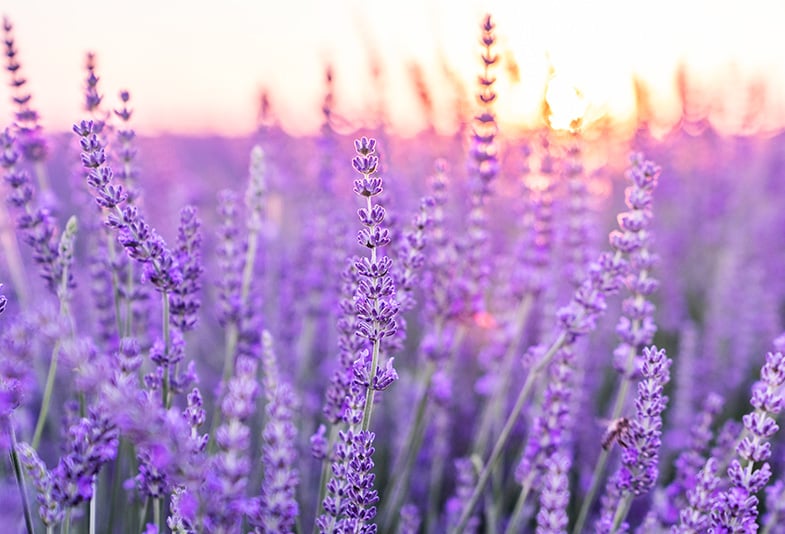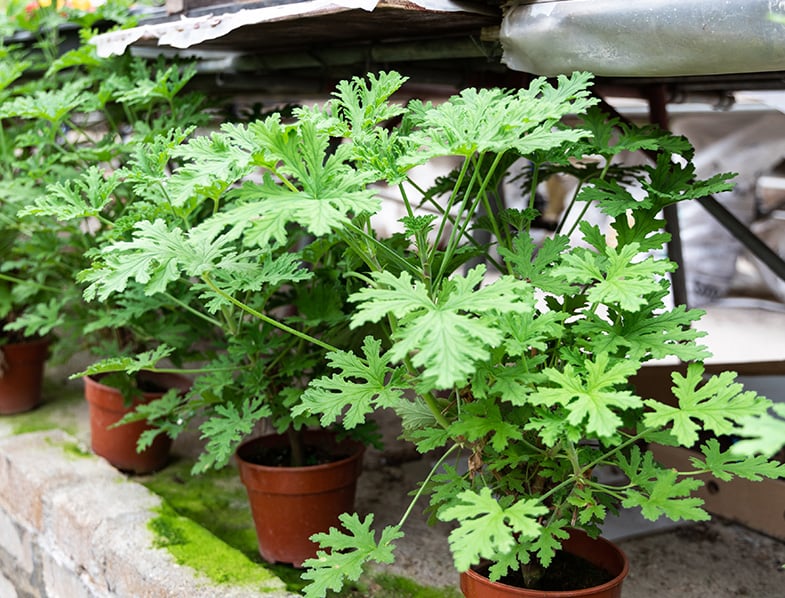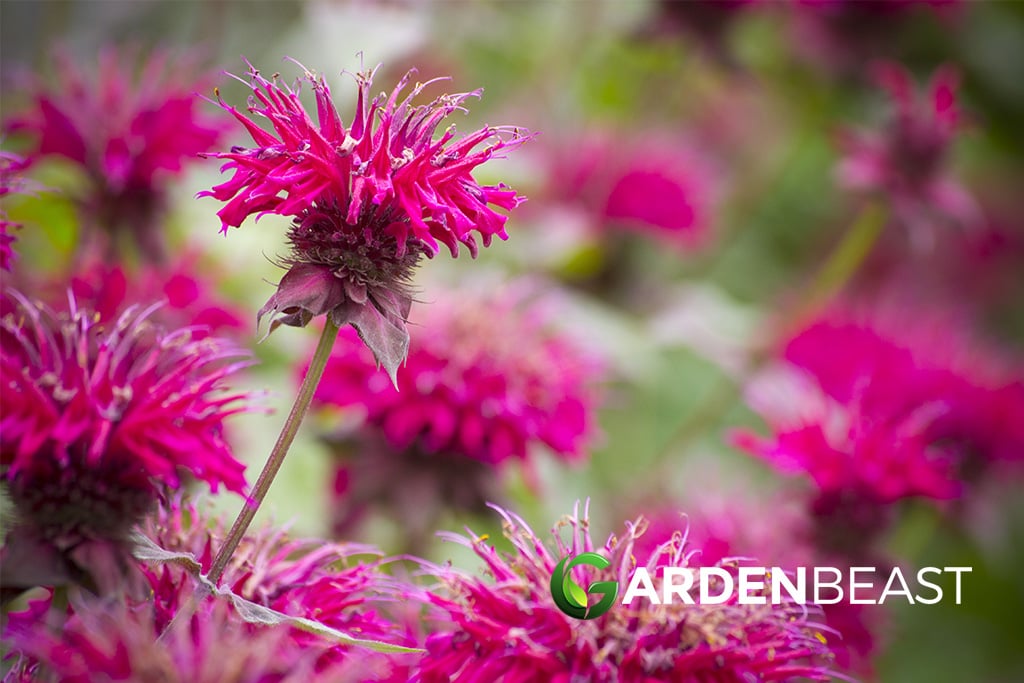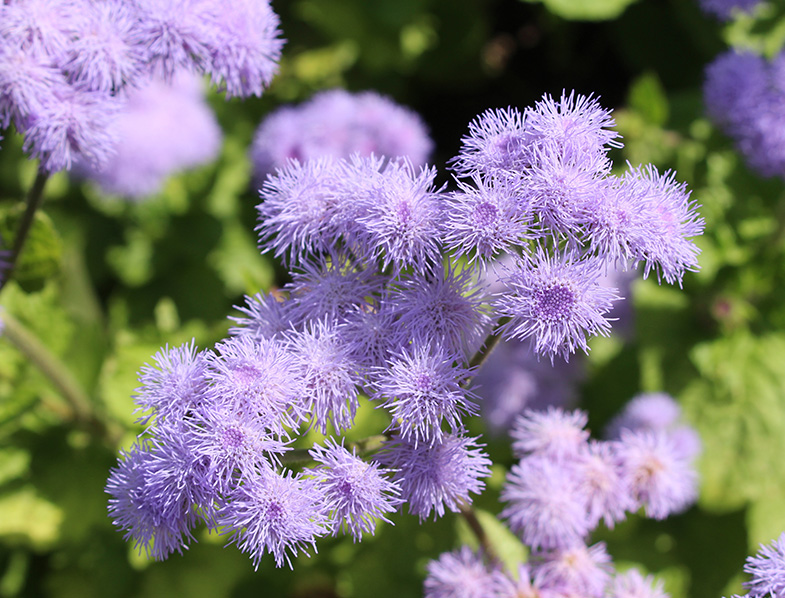As the weather gets warmer, one cannot help but dream about backyard barbecues, relaxing moments by the pool, or tanning under the sun. And nothing beats those lazy evenings near an outdoor fire pit. No matter what activities you plan on having in your yard this summer, one thing is for sure: mosquitos are bound to ruin your summer fun. They do this every summer.
Before you panic and look for mosquito traps or chemical repellents, try some Eco-friendly, cruelty-free solutions. They are very effective in warding off not only mosquitos but other annoying insects as well.
To help you enjoy your yard this summer, we have put together a list of the best mosquito repelling plants, along with some planting and growing tips. We also have some suggestions to make the plants more efficient. As a bonus, we have some extra tips to keep these pests at bay.
Best Mosquito Repellent Plants
1. Lavender
If you have ever cared for a lavender plant, you may have noticed that its flowers and leaves are never harmed by pests. This is due to the fact that both the flowers and the leaves are rich in essential oils that repel insects.

Lavender thrives in warm climates, but modern cultivars can also adapt to temperate regions. It is a very low maintenance plant. If you plant it in well-drained soil with plenty of sun exposure, it will thrive without any effort on your part. It does not need any fertilizer, and it grows better when you let the soil dry between watering sessions.
It is best to grow lavender from cuttings or nursery plants, as growing from seeds is very time-consuming. Be careful as lavender also comes in a dwarf variety. Consider the full-grown size of each herb when planting it, so you know how to space it.
2. Basil
Not only is basil great for salads, sauces, and pesto, but it also makes for a great mosquito repellent. Basil is easy to grow. It needs well-drained soil and full sun exposure. It respells other pests as well so you can place it around your vegetables. All types of basil have a very pungent smell so you can grow different varieties.

Basil grows well in containers and it emits its aroma naturally. As such, you do not need to chop it to release its fragrance, although chopping will improve its efficiency. Placing the herb in containers is great because you can move the containers according to your outdoor activities.
3. Citronella
More commonly known as lemongrass, this clump-forming grass contains high concentrations of citronellal. This is a compound known for its lemonish fragrance and excellent mosquito-repelling properties.
When shopping for citronella, keep in mind that there is an impostor plant that is often sold as citronella. We are talking about a type of geranium. The leaves of this plant have a mild lemony fragrance. However, it contains small amounts of citronellal, so it is not that efficient in repelling mosquitos.

As for the real citronella plant, you can care for it like you would for any ornamental grass. You can plant it outdoors or in containers. Plant it in fertile soil, where it can get plenty of sun exposure, and make sure to water it regularly.
4. Marigolds
These lovely plants will not just bring the colour of sunshine to your garden, but they will also keep mosquitos at bay. The best thing about them is that if you care for them properly, their blooms will last from late spring until fall. As such, they will protect you throughout the entire mosquito season. Although Marigolds repel mosquitoes and other pests, they attract beneficial insects like butterflies, bees, and ladybugs.

Marigolds thrive in full sun, but they will also grow well in partial shade. They can be grown from seed with little effort. You can sow the seeds directly outdoors after the last frost and you can expect to see sprouts after only a few days. In about 8 weeks you even enjoy the first blooms.
5. Rosemary
Basil is not the only aromatic herb that repels mosquitos. Rosemary’s woody scent repels mosquitoes, as well as carrot flies and cabbage moths. It is a great herb to plant among your vegetable crops. Under the right conditions, rosemary can make for a great border and you can even prune it into different shapes. After each pruning session, you can rest assured knowing that not a single mosquito will remain in sight.

Rosemary requires well-drained soil and plenty of sun exposure. It also needs good air circulation, which is why it grows better outdoors than indoors. You can grow it from seeds, but make sure to start the seeds indoors about two and half months before the last estimated frost.
6. Mint
A few healthy bushes of mint will not only ensure your summer’s supply of minty beverages, but they will also protect you from annoying insects. There are many mint verities to choose from. To maximize the use of these plants, choose a few of the edible varieties. We recommend spearmint, peppermint, apple mint, and chocolate mint.

Mild usually grows in cool, partially shady locations. It requires well-drained, rich soil but it easily adapts to any location. In the proper environments, it can be very invasive, so you should never place it around other plants. Ideally, you should plant it in containers. Nonetheless, make sure to choose wide containers that can accommodate its complex root system. You can grow it from seeds as it has a quick germination period, and you should see sprouts in less than two weeks.
7. Catnip
This herb is so efficient in repelling mosquitos that it has even caught the attention of the EPA. It is currently awaiting approval as a natural mosquito repellent. If you have a feline companion, they will surely support your efforts in fighting mosquitos with this herb.
Catnip is a very resilient and adaptable plant. It has a very quick germination period so it can be grown for seeds. Ideally, you should sow the seeds after the danger of the last frost has passed. This is a low-growing perennial which requires full sun exposure.

If you have cats, expect your cats to roll in the catnip batch. As such, it would be wise to plant it away from other plants which could be damaged by your cat. Keep in mind that in the right environment, catnip can also be invasive, so keep it away from sensitive plants. On the other hand, catnip does not have complex root systems so it can easily be grown in containers.
8. Bee balm
Bee balm is one of those amazing plants that repel annoying pests yet attracts beneficial insects. Also known as Horsemint or Monarda, this plant is extremely rich in fragrant oils. While it releases some of its oils naturally, you get the best results by crushing its leaves. Aside from its mosquito-repelling properties, bee balm will also enchant you with its lovely blooms. Its flowers come in shades of pink, red, purple, and white.

This plant thrives in full sunshine and good air circulation. You can plant it in spring or fall. A mature plant can reach 120 cm, so it makes for a great background plant. It has a wide diameter, so if you plan on having several plants, make sure to allow a 6- cm space between them. It likes well-moist soil, so make sure to water it regularly and add some much around its base to help the soil retain moisture. Keep in mind that this plant is susceptible to mildew, so reduce watering if you see signs of mildew.
9. Floss flower
This plant contains high amounts of Coumarin which is extremely unpleasant for mosquitos. Coumarin is also toxic for humans and most pets, so only choose this plant if you do not have pets or small children.
This plant is resilient and easily adaptable to any environment. It will thrive if you plant it in soil with good draining properties. You can plant it outdoors or in containers. It prefers full sun exposure, but in extremely hot weather it will need partial shade.

This plant gets along great with almost any other garden plant. It is a great choice for borders, edgings, and even mixed pots. You can grow it from seeds if you start the seeds indoors 8 weeks from the estimated last frost. It might need occasional fertilization for a blooming boost.
10. Sage
Sage is a member of the mint family, but it is also a staple in many herb gardens due to its culinary applications. There are over 700 sage varieties to choose from, but if you want to make the most of this plant, opt for an edible variety.

Sage thrives in dry soil and direct sun exposure. Regular harvesting is essential for the plant to grow to its full potential. Growing sage is relatively easy. If you plant it in soil with good draining properties that benefit from direct sunlight, sage will grow to its full potential.
This plant emits its fragrance naturally, but for the best results, you can crush its leaves, or even rub them directly on your skin. Sage has low allergen side effects, so it can be used by almost anyone. It can also be grown next to a wide variety of plants and it has minimal maintenance needs.
How to make the most of your mosquito-repelling plants
While planting some of the above plants in strategic locations will ward off a few insects, it will not guarantee, a mosquito-free ambience. Here are some tips that will yield better results:
- Chop fragrant leaves –When it comes to plants with thin fragrant leaves, such as basil or other aromatic plants, you can simply chop a few handfuls of the herbs. Place the chopped herbs around your group when you gather in the yard. Once you end your outdoor activities, you can throw the edible aromatic herbs in a blender and turn them into pesto. After all, there is no point in wasting good basil.
- Crush flowers or leaves – The leaves and flowers of some plants contain fragrant oils. To make the most of those plants, it is not enough to cut the plants but to crush them. This way, you release most of the essential oils. Such is the case of lavender, but it applies to other aromatic herbs as well. You can use a mortar and pestle to crush lavender and place the crushed herbs around you when you sit outdoors. When you end your outdoor activities, you can put the crushed herbs in infusion bags. Add the herb bags to your next bath or use the herbs for homemade beauty remedies.
- Burn dry herb bundles – Mosquitos avoid not only fragrant scents but also smoke. As such, burning fragrant herbs is a great way to keep your surroundings mosquito-free. For dry bundles, we recommend sage, mint, citronella, lemon balm, and lavender. You can throw the herbs directly in a fire pit, or you can keep the herb bundles around you and burn them at need.
Extra tips for repelling mosquitos
If you have surrounded yourself with fragrant herbs, but mosquitoes still get the best of you, there are a few other solutions that you can try.
Candles
Fragrant candles are often very effective against mosquitos. They are particularly good if they contain extracts that are known as natural mosquito repellents. Such is the case of citronella candles. For the best results, choose candles made with soy wax and high-quality essential oils.
Essential oils
Whether you use an electric diffuser or a candle diffuser, there is a wide range of essential oils that you can try to repel mosquitos. We recommend peppermint, lemon, citronella, basil, eucalyptus, lavender, and thyme.
Remove standing water
Mosquitos like to stay hydrated, and any type of standing water source will attract them. You cannot remove all water sources from your garden. However, make sure that your leisure areas are free from water bowls, fountains, ponds, and other standing water sources.
Do you have other mosquito-repelling secrets that you use in your garden? Let us know in the comments below!
